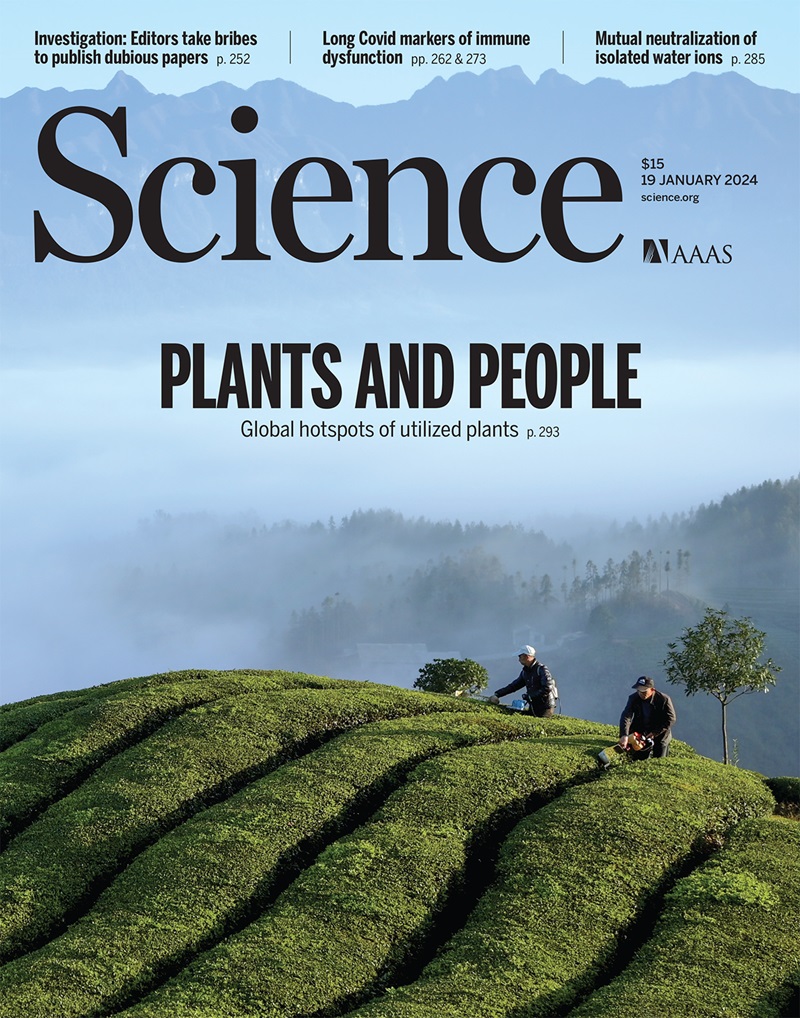Cation reactivity inhibits perovskite degradation in efficient and stable solar modules
IF 44.7
1区 综合性期刊
Q1 MULTIDISCIPLINARY SCIENCES
引用次数: 0
Abstract
Perovskite solar modules (PSMs) show outstanding power conversion efficiencies (PCEs), but long-term operational stability remains problematic. We show that incorporating N,N-dimethylmethyleneiminium chloride into the perovskite precursor solution formed dimethylammonium cation and that previously unobserved methyl tetrahydrotriazinium ([MTTZ]+) cation effectively improved perovskite film. The in situ formation of [MTTZ]+ cation increased the formation energy of iodine vacancies and enhanced the migration energy barrier of iodide and cesium ions, which suppressed nonradiative recombination, thermal decomposition, and phase segregation processes. The optimized PSMs achieved a record (certified) PCE of 23.2% with an aperture area of 27.2 cm2, with a stabilized PCE of 23.0%. The encapsulated PSM retained 87.0% of its initial PCE after ~1900 hours of maximum power point tracking at 85°C and 85% relative humidity under 1.0-sun illumination.
阳离子反应抑制高效稳定太阳能模块中的过氧化物降解
过氧化物太阳能电池组件(PSM)具有出色的功率转换效率(PCE),但其长期运行稳定性仍存在问题。我们的研究表明,在包晶前驱体溶液中加入 N,N-二甲基亚胺氯化物可形成二甲基铵阳离子,而之前未发现的甲基四氢三嗪([MTTZ] +)阳离子可有效改善包晶薄膜。MTTZ] + 阳离子的原位形成提高了碘空位的形成能,增强了碘离子和铯离子的迁移能垒,从而抑制了非辐射重组、热分解和相分离过程。优化后的 PSM 在孔径面积为 27.2 cm 2 的情况下,PCE 达到了创纪录的 23.2%,稳定 PCE 为 23.0%。在 85°C 和 85% 相对湿度条件下,在 1.0 太阳光照下,经过约 1900 小时的最大功率点跟踪后,封装 PSM 仍保持了 87.0% 的初始 PCE。
本文章由计算机程序翻译,如有差异,请以英文原文为准。
求助全文
约1分钟内获得全文
求助全文
来源期刊

Science
综合性期刊-综合性期刊
CiteScore
61.10
自引率
0.90%
发文量
0
审稿时长
2.1 months
期刊介绍:
Science is a leading outlet for scientific news, commentary, and cutting-edge research. Through its print and online incarnations, Science reaches an estimated worldwide readership of more than one million. Science’s authorship is global too, and its articles consistently rank among the world's most cited research.
Science serves as a forum for discussion of important issues related to the advancement of science by publishing material on which a consensus has been reached as well as including the presentation of minority or conflicting points of view. Accordingly, all articles published in Science—including editorials, news and comment, and book reviews—are signed and reflect the individual views of the authors and not official points of view adopted by AAAS or the institutions with which the authors are affiliated.
Science seeks to publish those papers that are most influential in their fields or across fields and that will significantly advance scientific understanding. Selected papers should present novel and broadly important data, syntheses, or concepts. They should merit recognition by the wider scientific community and general public provided by publication in Science, beyond that provided by specialty journals. Science welcomes submissions from all fields of science and from any source. The editors are committed to the prompt evaluation and publication of submitted papers while upholding high standards that support reproducibility of published research. Science is published weekly; selected papers are published online ahead of print.
 求助内容:
求助内容: 应助结果提醒方式:
应助结果提醒方式:


